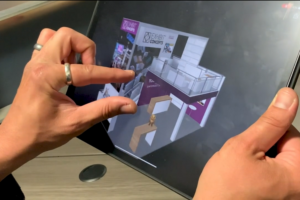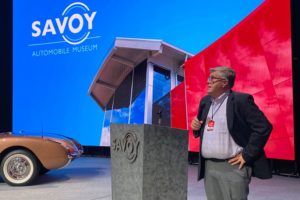Want to know the secret to creating an impactful experiential environment?
It’s all about planning and outcome-driven communication!
At the root of these concepts lies message-driven communication. But before we can dig into making these concepts impactful, we must first understand that message-driven communication is derived from interpretive planning, a common museum industry practice used to help craft effective spaces.
Elements of interpretation can strengthen almost any immersive experience, including trade shows. At its core, interpretive planning challenges you to deconstruct attendee experiences into an information network, where visitors are immersed in touchpoints based on a personal benefit analysis. In other words, experiences that get attendees to think, feel, and do.
Imagine, you’re on the show floor. Months of hard work brought you to this point. Your booth is stunning. Aside from the beautiful aesthetic, what is it that you want from attendees?
The answer to this question can be discovered through the effective utilization of message-driven communication and the interpretive planning process.
From the first ideation to the final product, creating a meaningful, effective experience takes thought, planning, and execution. Whether it’s launching a trade show program or cutting the ribbon on a new permanent environment, there are five key elements to message-driven communication and an effective experience. The sender, the message, the stories, the experience itself, and finally the audience.
Sender
The sender is more than who you are. The sender is the messenger. They decide what we want from the audience. To start on the journey to effective message-driven communication, senders need to reflect on their goals and desires. We don’t communicate to simply have people know something. We communicate to have people do something. We develop outcomes that serve as a guiding light for the overall plan and message. We work to develop goals that answer the question “what do we want the audience to think, feel, and do?”
Message
We must: make a claim, have a point, and work towards a “punchline.” Together, these three elements create our message. It’s important to remember, messages are not facts, information, or instruction. Messages are bold, provocative claims, related to your audience. Once messages are crafted, stories and facts are used to prove them. At the end of the day, our message acts as a theme for our story selections.
Stories
Stories are specific examples that humanize our message and evoke emotion in our audience. Your stories are proof points in getting audiences to think, feel, and do. People are the basic building blocks of a story. Therefore, stories are meant to represent humanity. It’s important to choose stories based on our message. If our story doesn’t support the chosen message, a different story is needed. These stories become the foundation of our experience.
Experience
The experience is the vessel which delivers our stories and ultimately our message. Developing a compelling experience for your audience allows your message to become memorable and relatable. By bringing our stories to life, the sender is able to inspire behaviors that get an audience to think, feel, and do. The experience should be traced back to what the sender wanted from their messaging.
Audience
Senders need to understand the characteristics of their audience and the implications that come along with it. Keeping your audience in mind throughout the process is vital. It’s important to create an experience that delivers a message in a relevant way. By identifying your audience and keeping them top of mind, senders can cater their messages and stories to be more effective at achieving desired results.
These five cornerstones of message-driven communication allow senders to better understand their goals, create dynamic and thoughtful messaging, select meaningful stories and deliver powerful experiences to audiences. At Exhibit Concepts, effective message-driven communication and planning create what we call our Attendee Experience Plan.
To learn more about message-driven communication and our proprietary approach, follow along with our blogs or connect with us. We’re always happy to help build your story.









